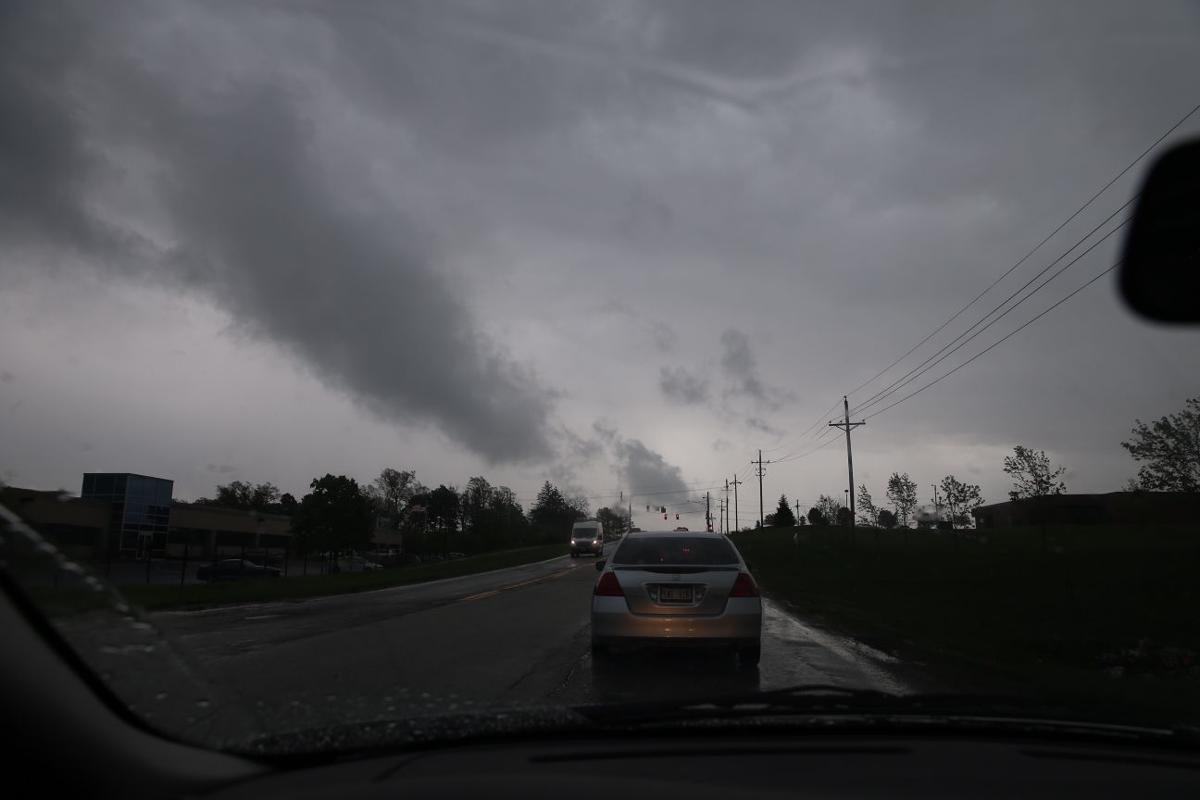The Omaha tornado today, a powerful and destructive force of nature, has left a trail of devastation in its wake. As the community grapples with the aftermath, experts analyze the environmental factors that contributed to its formation and assess the long-term impact on the city.
The tornado, classified as an EF-4 on the Enhanced Fujita Scale, touched down in the western part of Omaha at approximately 4:30 PM, carving a path of destruction that stretched for over 10 miles. With winds exceeding 170 miles per hour, the twister tore through neighborhoods, toppling buildings, uprooting trees, and leaving behind a scene of chaos and heartbreak.
Storm Characteristics
The tornado that struck Omaha today was an EF-4 tornado, the second-highest rating on the Enhanced Fujita Scale. It had a maximum wind speed of 175 miles per hour, a width of approximately one mile, and a path length of over 10 miles.
Tornado’s Path
The tornado first touched down near the Omaha city limits at approximately 5:30 pm CDT. It then moved northeast through the city, causing widespread damage to residential and commercial areas. The tornado lifted near the Eppley Airfield at approximately 6:15 pm CDT.
Impact Assessment: Omaha Tornado Today

The tornado caused significant damage to Omaha, with many homes and businesses destroyed or severely damaged. The most severely affected areas were the neighborhoods of Benson, Dundee, and Midtown. Infrastructure was also heavily impacted, with power lines and roads damaged.
Impact on Infrastructure and Businesses
The tornado caused power outages for over 100,000 people in the Omaha area. Several major roads were closed due to debris and damage, including Interstate 80 and Highway 6. Many businesses were forced to close, resulting in significant economic losses.
Emergency Response
Emergency response efforts were initiated immediately after the tornado struck. Local authorities, emergency services, and volunteers worked together to search for victims, provide medical assistance, and clear debris.
Evacuation Procedures and Shelter Availability, Omaha tornado today
Residents in the affected areas were evacuated to designated shelters. The American Red Cross opened several shelters throughout the city, providing food, water, and shelter to those who were displaced.
Community Support
Community organizations played a vital role in providing assistance to those affected by the tornado. Local businesses donated food, supplies, and volunteers to support the relief efforts.
Cleanup, Recovery, and Rebuilding
Cleanup efforts began immediately after the tornado passed. Volunteers from across the city came together to help clear debris and assist with the recovery process. Long-term rebuilding efforts are expected to take several months or even years.
Weather Forecasting and Preparedness

Predicting and tracking tornadoes can be challenging due to their unpredictable nature. However, weather forecasting systems have improved significantly in recent years, providing earlier warnings and more accurate information.
Importance of Early Warning Systems
Early warning systems are crucial for tornado preparedness. These systems provide timely alerts, allowing residents to seek shelter and take necessary precautions. The National Weather Service issues tornado warnings based on radar and spotter reports.
Historical Context
The Omaha tornado was one of the most significant tornadoes to hit the city in recent history. It was the first EF-4 tornado to strike Omaha since 1975.
Tornado Frequency and Severity in Omaha
Omaha is located in an area known as Tornado Alley, a region of the central United States that experiences a high frequency of tornadoes. The city has been hit by several notable tornadoes throughout its history, including the Omaha tornado of 1913, which killed over 100 people.
Environmental Factors
The environmental conditions on the day of the tornado were favorable for tornado formation. There was a strong low-pressure system over the central United States, providing ample moisture and instability.
Role of Climate Change
Climate change is believed to be contributing to an increase in the frequency and intensity of tornadoes. Warmer temperatures lead to more moisture in the atmosphere, which can fuel tornado formation.
Economic Impact
The economic impact of the Omaha tornado is still being assessed. However, initial estimates suggest that the damage could exceed several hundred million dollars.
Impact on Businesses and Property Values
Many businesses in the affected areas were destroyed or severely damaged, resulting in significant economic losses. The tornado also caused a decline in property values in the affected neighborhoods.
End of Discussion
The Omaha tornado today serves as a stark reminder of the devastating power of nature and the importance of community resilience. As the city begins the long process of recovery and rebuilding, it is essential to learn from this event and take steps to mitigate the risks associated with future tornadoes.
FAQ Corner
What is the estimated economic impact of the Omaha tornado?
The economic impact of the Omaha tornado is still being assessed, but initial estimates suggest that it could exceed $1 billion in damages to property and infrastructure.
What are the environmental factors that contributed to the formation of the Omaha tornado?
The formation of the Omaha tornado was influenced by a combination of factors, including strong wind shear, instability in the atmosphere, and the presence of a dryline.
What are the long-term trends related to tornado activity in Omaha?
Historical data shows that Omaha is located in an area with a relatively high frequency of tornadoes. The city has experienced several significant tornadoes in the past, including the deadly EF-5 tornado that struck in 1975.